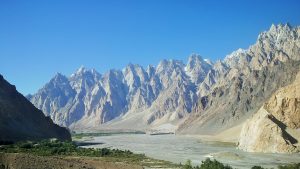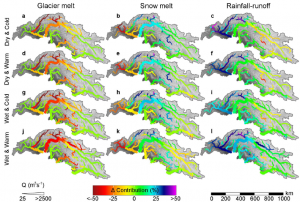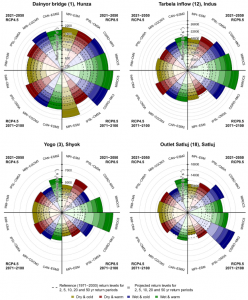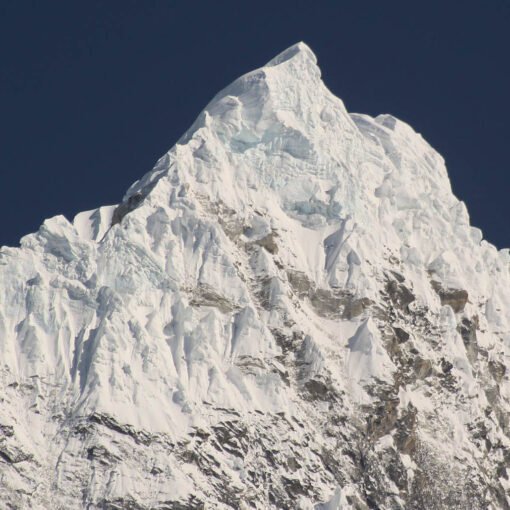The Indus is one of the most meltwater-dependent rivers on Earth, and hosts a large, rapidly growing population and the world’s largest irrigation scheme. Understanding the hydrology of the upper Indus basin is challenging. The Hindu Kush, Karakoram and Himalayan mountain ranges are difficult to access, hampering field measurements of meteorological, glaciological and hydrological processes. These processes are therefore still poorly understood. To make it more complex, climate change projections for the Indus basin show a very large spread. In our recent (open access) paper published in PLoS ONE we present hydrological projections for the 21st century in the upper Indus basin, based on a cryospheric-hydrological model forced with an ensemble of downscaled GCM outputs.

The Hunza river in front of the Passu cones (upper Indus basin).
Three methodological advances are introduced:
- A new precipitation dataset that corrects for the underestimation of high-altitude precipitation is used.
- The model is calibrated using data on river runoff, snow cover and geodetic glacier mass balance.
- An advanced statistical downscaling technique is used that accounts for changes in precipitation extremes.

Our projections indicate decreases in glacier melt contribution in favor of snow melt and rainfall-runoff contribution to stream flow in the upper Indus basin, at the end of the 21st century.
The focus of the analysis in our study is not only on changes in sources of runoff and water availability but also on changes in seasonality and hydrological extremes, which are still large unknowns in the upper Indus basin. We conclude that the upper Indus basin faces a very uncertain future in terms of water availability towards the end of the 21st century. Despite the large uncertainties in future climate and water availability, basin-wide patterns and trends of intra-annual shifts in water availability are consistent across climate change scenarios. For the near future these trends mainly consist of minor increases in summer flows combined with increased flows during other seasons. For the far future the trends show decreases in summer flows combined with stronger increasing flows during the other seasons. Furthermore, increases in intensity and frequency of extreme discharges are found for most of the upper Indus basin and for most scenarios and models considered, implying increases in flooding events during the 21st century.
The study is presented at the AGU Fall meeting in San Francisco on Monday, 12 December 09:15 – 09:30, Moscone West – 3005

Analysis of future changes indicates increases in the frequency and magnitude of extreme flows for most of the UIB and most of the climate change scenarios.




